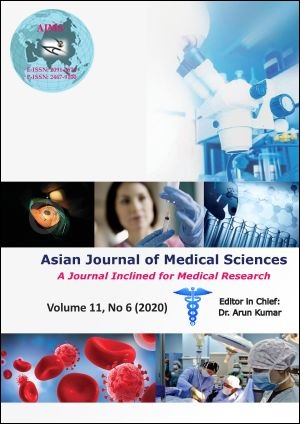Role of pleural fluid-serum protein carbonyl gradient in differentiating exudative and transudative effusions
Keywords:
Protein Carbonyl, Exudates, TransudatesAbstract
Background: Pleural effusions often cause a diagnostic dilemma. The first step in the evaluation of pleural effusions is the distinction between exudates and transudates.
Aims and Objectives: The current study was designed to distinguish these two broad subgroups of pleural effusions, based on the protein carbonyl gradient between pleural fluid and serum.
Materials and Methods: Forty-four exudative and thirty-six transudative pleural effusion cases based on clinical findings and evaluation by Light’s criteria were selected. Protein carbonyl was measured by established photometric method using dinitrophenylhydrazine (DNPH) method in pleural fluid and serum of all the cases.
Results: Oxidative stress, estimated by the protein carbonyl gradient between pleural fluid and serum, was found to be higher in exudates when compared to transudates. No significant difference was existent between exudates of different aetiology. However, the gradient was higher in exudates from males compared to females. No such difference was found among transudates.
Conclusions: Carbonyl stress being a simple easily measurable biochemical parameter, pleural fluid to serum protein carbonyl gradient may serve as a useful tool for differentiating pleural effusions based on pathogenesis.
Downloads
Downloads
Published
How to Cite
Issue
Section
License
Authors who publish with this journal agree to the following terms:
- The journal holds copyright and publishes the work under a Creative Commons CC-BY-NC license that permits use, distribution and reprduction in any medium, provided the original work is properly cited and is not used for commercial purposes. The journal should be recognised as the original publisher of this work.
- Authors are able to enter into separate, additional contractual arrangements for the non-exclusive distribution of the journal's published version of the work (e.g., post it to an institutional repository or publish it in a book), with an acknowledgement of its initial publication in this journal.
- Authors are permitted and encouraged to post their work online (e.g., in institutional repositories or on their website) prior to and during the submission process, as it can lead to productive exchanges, as well as earlier and greater citation of published work (See The Effect of Open Access).




